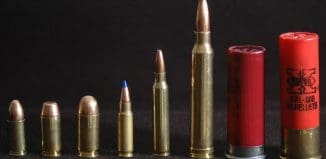Revolution in body armor? maybe.
This post is also available in:  עברית (Hebrew)
עברית (Hebrew)
 New materials promise improvements in the weight of body armor, but are unproven—and an alternative approach to the problem involves looking at whether some current systems are stronger and heavier than necessary.
New materials promise improvements in the weight of body armor, but are unproven—and an alternative approach to the problem involves looking at whether some current systems are stronger and heavier than necessary.
Technological progress tends to be incremental, but the U.S. Office of Naval Research (ONR) hopes to make significant advances with its “Lighten the Load” initiative to reduce the burden on U.S. Marines. Body armor is a critical target, as it is the single largest element of the load.
“We are taking multiple approaches to reduce the weight of PPE (personal protective equipment),” says James Mackiewicz, program manager in ONR’s department of expeditionary warfare and combating terrorism.
One approach is to find improved materials for all applications. For example, the ONR is looking into “better ballistic fabrics, fabric system configurations, improved armor synergy and improved ceramics for small-arms defeat,” Mackiewicz says.
According to Aviation Week another approach is determining whether the armor is suitable to the mission, or whether lighter-weight armor could do as well. “We are reevaluating the threats to Marines to ensure we provide the appropriate armor for the threat scenario,” says Mackiewicz.
Body armor usually consists of “soft-armor” garments with “hard-armor” insert plates. The soft armor, which defeats low-velocity rounds and shrapnel, is typically woven DuPont Kevlar aramid fiber, ultra-high-molecular-weight polyethylene or other synthetics. The inserts have a front face made of ceramic, usually boron or silicon carbide—among the hardest materials known—with a tough synthetic backing. Incoming rounds, even armor-piercing bullets, are deformed or shattered by the hard armor, and remnants are stopped by the backing material or soft armor.
Armor research tends to follow developments in materials science, and much of the current effort focuses on carbon nanotubes (CNT), a single sheet of carbon atoms rolled into a tube. In theory, CNTs could be made hundreds of times stronger than steel, but this would rely on manufacturing flawless tubes in bulk, which is not yet possible. However, smaller tubes can be produced in bulk, and these are used to reinforce soft and hard armor.
i-HLS ISRAEL Homeland Security






























